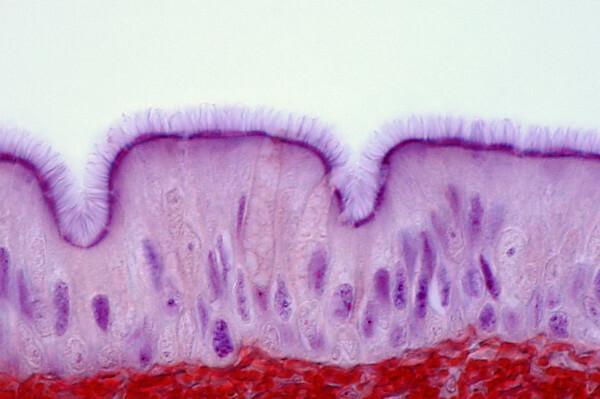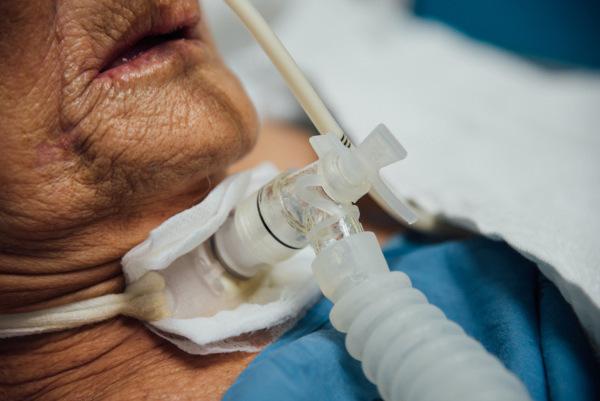Trachea it is a portion of the respiratory system that acts as a channel for the passage of air. This body starts right after the larynx and goes to the place where it branches into bronchi. Located in the region anterior to the esophagus, the trachea consists of a series of cartilages in “C” shape, which are important to prevent its collapse and ensure an adequate passage of air to the lungs.
Read too:Lungs - anatomy of this fundamental organ for the respiratory system
trachea function
The trachea is a kind of tube that serves as place of passage for air towards the lungs. Therefore, the occlusion of the trachea causes the interruption of the air passage, leading to difficulty in breathing.

Tracheal characteristics
The trachea is a cylindrical and cartilaginous organ which has a tube shape. This body, which belongs to the respiratory system, extends from the region of the sixth cervical vertebra to the fifth thoracic vertebra, having a length of about 9 to 12.5 cm.
It starts right after the larynx and continues to the place where it branches, originating two bronchi, which penetrate the lungs. At the height of the second, third and fourth rings of the trachea, the gland is located in the anterior region. thyroid, responsible for the production of hormones related to our metabolism.
Do not stop now... There's more after the advertising ;)
The trachea has a cartilage series, of variable number (between 16 to 20), which prevent the closure of the channel, providing an adequate air flow. Tracheal cartilages are hyaline and have a "C" shape, the open portion being facing the posterior side.
These free portions are connected by fibroelastic ligaments and smooth muscle, which act, respectively, to prevent excessive distension of the lumen and regulate its size. The smooth muscle, when contracting, reduces the lumen of the trachea, increasing the speed of exhaled air, being important in the cough reflex.

The trachea is internally covered by a ciliated pseudostratified cylindrical epitheliumwith goblet cells. The lamina propria is made of loose connective tissue, where seromucous glands are present, which have ducts that open into the organ's lumen. At goblet cells and seromucous glands they are responsible for the secretion of mucus, which covers the interior of the organ.
O mucus is related to the cleansing of inspired air, being taken from the trachea to the pharynx by ciliary beats. This movement ensures that the mucus, together with the impurities retained, is swallowed. In addition to the mucus acting in cleaning, in the trachea there is a lymphocyte barrier that also guarantees protection against particles that can damage the respiratory system. Externally, the trachea is lined with loose connective tissue.
Read too: Organs of the human body
tracheostomy

Tracheostomy is a process performed in situations such as upper airway obstruction, tumors, swelling caused by infections, burns or acute allergic reaction and orotracheal intubation prolonged. In the tracheostomy, a opening in the cervical portion of the trachea, allowing its communication with the external environment. The opening is held open by a tube (cannula), which can be made of different materials, such as plastic or metal. Tracheostomy can be definitive or not, which will depend on the patient's conditions and the reasons that led to the procedure.
The arthropod trachea
Some arthropods breathe through tracheas (tracheal breathing), very different structures from the human trachea. Arthropod tracheas are responsible for gas exchange and are characterized by being tubes that branch through the animal's body. The larger tubes open to the outside and are called tracheas.
In the region of internal organs and tissues, it is verified that the branches are thinner, being called tracheolae. Air enters the trachea through openings in the animal's body called spiracles. The tracheal system allows oxygen to be taken directly to the cells, without the need for transport through the circulatory system.
By Vanessa Sardinha dos Santos
Biology teacher
Would you like to reference this text in a school or academic work? Look:
SANTOS, Vanessa Sardinha dos. "Trachea"; Brazil School. Available in: https://brasilescola.uol.com.br/biologia/traqueia.htm. Accessed on June 27, 2021.

